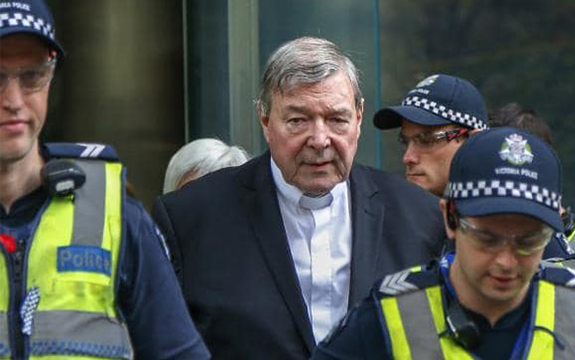Opinion: Dissenting judge gives Pell reason to clutch at High Court lifeline

In Summary
- Opinion piece for The Australian by Mirko Bagaric, Professor of Law, Swinburne University of Technology
The path to overturning his convictions for child sex offences is now more difficult for George Pell but certainly not impossible.
Having lost his appeal against conviction in the Victorian Court of Appeal on Wednesday, Pell’s only remaining avenue of appeal is to the High Court of Australia.
There is no automatic right to an appeal at the High Court.
However, it is likely that Pell will satisfy the test for special leave to appeal.
There are a large number of historic sexual abuse cases now being prosecuted and hence Pell’s case raises a matter of public importance in relation to a complex area of law. The high-profile nature of the case provides the High Court with an ideal vehicle to promote the interests of justice by widely promulgating some of the relevant legal principles that apply in such cases.
Moreover, the dissenting judgment of Justice Mark Weinberg provides a coherent platform from which to launch an appeal.
In my view, Justice Weinberg is the leading criminal law jurist in the country and his standing in the legal community is likely to encourage Pell’s legal team to appeal to the High Court.
The decision whether to appeal to the High Court might also be swayed by the fact the High Court has recently been critical of some judgments of the Victorian Court of Appeal. In The Queen v Falzon (2018) HCA 29 the High Court summarily overturned a judgment of the Court of Appeal, which held that when an accused is charged with cultivation and trafficking of a large amount of drugs, the prosecution could not tender evidence of large amounts of cash found in the possession of the accused as evidence that the drugs were possessed in order to sell them.
The High Court pointed out that the decision by the Victorian Court of Appeal was patently contrary to established legal authority and that the Victorian court effectively “refused to follow those earlier decisions while purporting to observe them”.
The High Court added that “this was not a course properly open to the majority and it should not be repeated”.
This decision followed an earlier Victorian Court of Appeal decision where the court declined to adopt established principles regarding the admissibility of tendency evidence on the basis that these principles were clearly wrong.
The High Court in IMM v The Queen (2016) HCA 14 took the contrary view.
It was the Victorian Court of Appeal that was wrong — clearly so.
In the last full calendar year, 14 of the 63 High Court judgments handed down in 2018 focused on the criminal law. Four of the appeals were from Victoria, and three were successful (the other two being R v Dennis Bauer (a pseudonym) (2018) HCA 40 and Strickland (a pseudonym) v DPP (Cth) (2018) HCA 53.
It is not tenable to meaningfully assess the merits of any particular appeal until the grounds and arguments have been lodged. But absent exceptional circumstances, any appeal lodged by Pell to the High Court would be confined to the same three grounds as at the Victorian Court of Appeal.
It is almost certain that one of the grounds would be that the conviction was unreasonable, given that this was the ground upheld by Justice Weinberg.
The argument that a conviction is unreasonable incorporates an impressionistic test given that it turns largely on an assessment on the credibility and reliability of the evidence by the complainant.
The empirical evidence establishes that there are no definitive tests to determine whether a person is being honest or accurate. Moreover, judges are no more accurate in their assessment of witness credibility than lay people.
Hence it is not surprising that the Victorian Court of Appeal split two judges to one on this issue.
The fact that this division occurred is most likely to provide the catalyst for the continuation of this matter in both the court of law and court of public opinion.
Professor Mirko Bagaric is Director of the Evidence-Based Sentencing and Criminal Justice Project at Swinburne University of Technology. This opinion piece was originally published in The Australian.

